 Your new post is loading...
 Your new post is loading...

|
Scooped by
Gust MEES
|
Luxembourg's Ministry of State and the Ministry of Education, Children and Youth have announced that a Holocaust education centre will open its doors at the Abbey of Cinqfontaines next year.
During a ceremony held at the abbey on Sunday in memory of the nearly 300 Jews who were interned there before their deportation, Luxembourg's Minister of Education, Children and Youth, Claude Meisch, announced the opening of a centre for citizenship education and remembrance of the victims of the Shoah (also known as the Holocaust) in 2022.
During the Second World War, the former Abbey of Cinqfontaines was requisitioned and used in Luxembourg as a place of internment for Jews. Internment in appalling living conditions preceded deportation to Nazi concentration and extermination camps such as Theresienstadt and Auschwitz. Learn more / En savoir plus / Mehr erfahren: http://www.scoop.it/t/luxembourg-europe/?&tag=History

|
Scooped by
Gust MEES
|
Le Grand-Duché apparaît dans ses frontières actuelles
En 1939 et en 1989, les Luxembourgeois ont célébré le centenaire, puis le 150e anniversaire de l’indépendance du pays. Mais à vrai dire, l’événement fêté ensuite fut d’abord vécu comme douloureux par la population concernée. Le 19 avril 1839, le traité de Londres impose le partage du Grand-Duché, réglant ainsi le conflit issu de la Révolution belge. Il y a désormais deux Luxembourg: le Grand-Duché de Luxembourg sous la souveraineté des Orange-Nassau, et le Luxembourg belge qui forme une province de la Belgique indépendante. La ligne de démarcation suit plus ou moins la frontière linguistique entre les parties francophone et germanophone, sauf dans la région d’Arlon. Le traité de 1839 trace les frontières du pays qui n’ont plus guère changé depuis. Quant aux habitants de part et d’autre de la nouvelle frontière, ils auraient aimé rester unis. Les Luxembourgeois n’avaient pas encore le sentiment d’appartenir à une communauté nationale à part. La majorité avait pris parti pour les insurgés belges, contre Guillaume Ier. Learn more / En savoir plus / Mehr erfahren: http://www.scoop.it/t/luxembourg-europe/?&tag=History

|
Scooped by
Gust MEES
|
En collaboration avec la start-up VR Timetravel, la Ville de Luxembourg proposera, à partir de dimanche, des visites guidées enrichies de réalité virtuelle pour plonger les touristes dans l’ambiance de la capitale au 19e siècle. Le projet pilote ne concerne pour l’instant que le quartier du Pfaffenthal.
Après la mise en circulation d’une première navette 100% autonome au mois de septembre, la Ville de Luxembourg innove une nouvelle fois grâce aux nouvelles technologies. En partenariat avec la start-up allemande Timetravel, elle lancera dimanche la première visite touristique «augmentée».
Grâce à des casques de réalité virtuelle, il sera en effet possible de voir à quoi ressemblait la capitale luxembourgeoise au 19e siècle. Il ne s’agit pas de regarder de vieilles photos des bâtiments, mais d’être immergé dans le Luxembourg-ville d’il y a plus d’un siècle, avec ses ambiances et sa vie quotidiennes. Learn more / En savoir plus / Mehr erfahren: http://www.scoop.it/t/luxembourg-europe/?&tag=VR http://www.scoop.it/t/luxembourg-europe/?&tag=History http://www.scoop.it/t/luxembourg-europe/?&tag=tourism

|
Scooped by
Gust MEES
|
1867 est un projet de hub qui devient un point d’information et de collaboration pour le projet transmédiatique et éducatif : des classes de l’enseignement secondaire mais aussi des universitaires, spécialisés en construction 3D en architecture, en histoire ou en informatique ont la possibilité de participer activement à la reconstruction de notre capitale et de son passé.
Une date… :
Au printemps 1867, le Luxembourg est une forteresse militaire complexe, le résultat ultime d’une construction qui a duré des centaines d’années, une ville occupée par une garnison prussienne. Le Grand-Duché est un pays « autonome » et membre du Zollverein, l’union douanière mise sur pied par la Prusse. Quand Napoléon III propose de racheter le pays du Grand-Duc Roi Guillaume 1er, la population est sous tension, le trouble gagne la ville et le pays. Les grandes nations envoient leurs agents secrets, elles mobilisent leurs troupes, Bismarck intervient…
Un projet… :
Reproduire la ville historique dans une réalité virtuelle, faire revivre le passé à travers les outils du futur. En collaboration avec plusieurs musées et établissements éducatifs, « 1867 » est devenu un projet transmédiatique regroupant une communauté hétérogène autour d’une passion commune : plonger dans une histoire qui révèle ses aventures, ses secrets et ses énigmes. Edmond de la Fontaine, Michel Lentz, Victor de Tornaco, Guillaume Weydert, mais aussi des personnages moins célèbres – l’infirmière, le pasteur de l’église St. Michel, les sœurs du couvent, les chiffonniers, les tanneurs, les marchandes, la jolie boulangère ou le soldat du corps des chasseurs luxembourgeois : tout un beau monde se retrouve ici pour donner vie à une coulisse à la fois historique et virtuelle. Learn more / En savoir plus / Mehr erfahren: http://www.scoop.it/t/luxembourg-europe/?&tag=VR http://www.scoop.it/t/luxembourg-europe/?&tag=History http://www.scoop.it/t/luxembourg-europe/?&tag=tourism

|
Scooped by
Gust MEES
|
On Monday 29 January 2018, the Luxembourg Centre for Contemporary and Digital History (C²DH) and the Luxembourg Ministry of Justice signed an agreement to launch a research project that will explore more than 200 years of the history of justice in Luxembourg.
At a press conference, Minister of Justice Félix Braz, C²DH Director Prof. Andreas Fickers and project manager Prof. Denis Scuto, together with the associated partners, presented an overview of this four-year project, which will be carried out in close cooperation with the Luxembourg National Archives. Learn more / En savoir plus / Mehr erfahren: https://www.scoop.it/t/luxembourg-europe/?&tag=Laws http://www.scoop.it/t/luxembourg-europe/?&tag=History https://www.scoop.it/t/luxembourg-europe/?&tag=University+Luxembourg

|
Scooped by
Gust MEES
|
Déi 12 Konferenzen versichen ënnert dem Titel “E neie Bléck op d’Lëtzebuerger Geschicht” an enger metanationaler Perspektiv an d’Geschicht vu Lëtzebuerg vun der Virgeschicht bis an d’21. Jorhonnert anzeféieren.
Vun der Vir- a Fréigeschicht, der keltescher an der gallo-réimescher Epoch, dem Willibrord an dem Sigfrid, dem Entstoe vun enger Grofschaft, dem Ausgräife nom réimesche Keesertroun an der béimescher Kinnekskroun, de burgundeschen an habsburgeschen Herrscher bis bei d’Hexeverfolgungen a de Mariekult, d’Entstoe vun engem eegestännege Staat, déi wirtschaftlech Entwécklung am 19., 20. an 21. Jorhonnert, den 1. an den 2. Weltkrich, d’Integratioun an Europa, déi demographesch an déi kulturell Entwécklung am spéiden 20. a fréien 21. Jorhonnert: d’Geschicht vun deem Raum, deen haut Lëtzebuerg heescht, ass net ze verstoen ouni Bléck op dat wat ronderëm an a ganz Europa geschitt.
D’Konferenzen a Lëtzebuerger Sprooch riichten sech u jiddereen, deen Interessi fir d’Lëtzebuerger Stad- a Landesgeschicht huet. Wee wëllt, ka sech mat engem vun dësen zwee Bicher virbreeden:
Michel Pauly, Geschichte Luxemburgs (Reihe C.H. Beck Wissen 2732), Beck Verlag, München 20132, 128 S.
Michel Pauly, Histoire du Luxembourg (coll. Références 31), Editions de l’Université de Bruxelles, Bruxelles 20172, 152 p. Learn more / En savoir plus / Mehr erfahren: https://www.scoop.it/t/luxembourg-europe/?&tag=History

|
Scooped by
Gust MEES
|
Melusine (French: ) or Melusina is a figure of European folklore, a female spirit of fresh water in a sacred spring or river. She is usually depicted as a woman who is a serpent or fish from the waist down (much like a mermaid). She is also sometimes illustrated with wings, two tails, or both.
The first mention of Melusina dates back to 1392 in a tale written by Jean d’Arras. The Duke of Berry, grandson of John of Luxembourg, known as John the Blind, commissioned the book recounting her legend. At the same time many written and oral stories from long ago attest to the existence of a very beautiful woman who changed into a fish or snake woman in her bath. On being spied upon by her knight she would even transform herself into a dragon. This woman sounds incredibly like Melusina and her existence seem to go back thousands of years. A LITERARY SAGA As yet without a given name, Melusina was identified as a creature, a goddess, strange and often malevolent, half woman, half dragon, fish or snake. Her origins are lost in the mists of time. She underwent many different metamorphoses, which are related in ancient texts and mythology (the saga of Gilgamesh, Ulysses’ Odyssey, Aphrodite and Anchises…). In the Middle Ages the image of the snake-dragon woman underwent an important transformation. Under the influence of the Catholic Church she became a devil. She represented the sin of lust, and illuminated manuscripts show her brushing her long hair in front of a mirror. At mass priests warned their flock to beware her perversity: beautiful to look at but so diabolical! She can be recognised hiding her snake’s tail in the water. Learn more / En savoir plus / Mehr erfahren: https://www.scoop.it/t/luxembourg-europe/?&tag=History http://aroundthestory.com/story/43

|
Scooped by
Gust MEES
|
Nestled in the Pétrusse Valley, behind leafy trees and in the shadow of the Viaduct lies the Chapelle Saint-Quirin, a small chapel carved into the rocky valley wall.
There are no signs, no brochures and no plaques on site to hint at the name or history of the chapel.
But, the layers of dust and cobwebs covering pews and statues locked inside the barred door and windows let passersby know that it probably hasn’t been used for a while.
Patron saint of Luxembourg
The chapel is named after Saint Quirin of Neuss who was, from 1544 to 1666, the patron saint of Luxembourg Ville. It has been an enclosed chapel since 1355, when the outer wall was built; the bell tower and rooftop were added during restorations in the late 19th Century. Religious uses of the chapel site can be traced back much further, however, as the Luxembourg City Tourist Office claims that the site was originally used by the Romans as an early Christian sanctuary. Learn more / En savoir plus / Mehr erfahren: http://www.scoop.it/t/luxembourg-europe/?&tag=History

|
Scooped by
Gust MEES
|
Lust auf eine hochinformative Zeitreise durch die luxemburgische Geschichte? Dann kaufen Sie in Ihrem Kino eine Eintrittskarte für den Dokumentarfilm „1.000 Joer Buerg Clierf - Land a Leit“.
Das vom „Broadcasting Center Europe“ ko-produzierte Werk von Erny Koener (800 Joer Buerg Clierf asbl) nach dem Szenario des Historikers, Dialektologen und Schriftstellers Alain Atten bei dem Marc Thoma (RTL) Regie führte, spannt in anderthalb Stunden den historischen Bogen vom Jahr 1100 bis heute mittels einer Menge von nachgestellten Szenen, zum Teil bis heute unveröffentlichten Originaldokumenten, Original-Filmmaterial und Szenen, die bereits für einen Dokumentarfilm über die Geschichte der Burg Clerf aus dem Jahr 1981 gedreht wurden.
Der neue Dokumentarfilm ist eigentlich die Fortsetzung dieses Projekts von Erny Koener und Marc Thoma, das anlässlich der 800 Jahr Feier der Burg Clerf verwirklicht wurde - damals auf 16mm-Film.
700 Teilnehmer, 130 „Locations“
Learn more / En savoir plus / Mehr erfahren: http://www.scoop.it/t/luxembourg-europe/?&tag=History

|
Scooped by
Gust MEES
|
Bienvenue sur le portail officiel du Grand-Duché de Luxembourg. Partez à la découverte d’un pays multiculturel et multilingue, situé au cœur de l’Europe. Avec sa haute qualité de vie, sa nature préservée et son économie florissante, le Luxembourg est un endroit où il fait bon vivre. Membre fondateur de l’Union européenne, premier pays européen à s’être doté d’un cadre légal en matière d’exploitation de ressources spatiales, pays parmi les plus innovants, performants et stables du monde, voilà ce qui fait du Luxembourg une nation clairement tournée vers l’avenir. Learn more / En savoir plus / Mehr erfahren: http://www.scoop.it/t/luxembourg-europe http://www.scoop.it/t/luxembourg-europe/?&tag=History

|
Scooped by
Gust MEES
|
Die neue App der Stadt Luxemburg (VdL) ermöglicht eine Zeitreise in das Luxemburg der Vergangenheit. An sieben Orten sollen Besucher in der Hauptstadt sehen können, wie das Gebäude, vor dem sie sich befinden, früher aussah. Zudem bietet die App die Möglichkeit, weitere Details über die Sehenswürdigkeit zu erfahren.
Unter anderem ist der Royal Hamilius, das Rathaus oder der Großherzogliche Palast zu sehen. “Wir wollen in Zukunft zusammen mit dem City Tourist arbeiten, um so eine Touristenroute auszuarbeiten. Zurzeit sind erst sieben Orte in der App integriert. In Zukunft werden aber noch weitere hinzukommen”, erklärt der zuständige Schöffe Patrick Goldschmidt am Mittwoch auf dem “City Breakfast”.
Die App “VdL-AR” (AR steht für Augmented Reality) wurde zusammen mit einer luxemburgischen Start-up ausgearbeitet und ist seit Mittwoch sowohl für iPhone als auch für Android erhältlich. Learn more / En savoir plus / Mehr erfahren: http://www.scoop.it/t/luxembourg-europe/?&tag=Apps http://www.scoop.it/t/luxembourg-europe/?&tag=Luxembourg-City http://www.scoop.it/t/luxembourg-europe/?&tag=tourism

|
Scooped by
Gust MEES
|
Despite Grand Duke Henri's actual birthday being on April 16, traditionally since 1961 Luxembourg's National Day is celebrated on June 23.
But why?
Since the 19th Century Luxembourg residents have celebrated their monarch's birthday. Before 1890, the year Luxembourg gained an independent monarchy, the King of the Netherlands was also automatically the Grand Duke of Luxembourg.
In 1850, the official celebration of King William - or Guillaume - III's birthday, known as “Kinneksdag” (King's Day), was transferred from February to June 17, which was in fact his wife's birthday. The reason for the change was the proximity of the king's birthday to the day of his brother's death. Learn more / En savoir plus / Mehr erfahren: http://www.scoop.it/t/luxembourg-europe/?&tag=History

|
Scooped by
Gust MEES
|
|

|
Scooped by
Gust MEES
|
Le Luxembourg se raconte aussi par son histoire, les grandes dates et les petites anecdotes, ces événements qui ont façonné le Grand-Duché jusqu’à ce qu’il devienne ce qu’il est aujourd’hui. Tout au long de l’été, Paperjam a demandé à l’historien Guy Thewes, directeur des 2 Musées de la Ville de Luxembourg, de raconter l’histoire du pays à travers 10 dates. Pour cette troisième étape dans le temps, retournons au 1er octobre 1795.
1 er octobre 1795
L’ancien duché de Luxembourg disparaît de la carte
Les événements de la Révolution française vont entraîner la disparition de l’ancien duché de Luxembourg. Pourtant, les Habsbourg d’Autriche se sont défendus bec et ongle pour garder l’héritage qu’ils ont reçu au début du 18e siècle de leurs parents espagnols.
Mais les révolutionnaires français l’emportent sur le champ de bataille. La garnison autrichienne de la forteresse de Luxembourg capitule en juin 1795 après un blocus de plus de six mois. Le 1er octobre 1795, la Convention signée à Paris met un point final à la conquête des anciens Pays-Bas en décrétant l’annexion des provinces «belgiques» à la République française. Learn more / En savoir plus / Mehr erfahren: http://www.scoop.it/t/luxembourg-europe/?&tag=History

|
Scooped by
Gust MEES
|
From this Sunday 2 December 2018, the public will have the opportunity to go on a guided VR Timetravel (virtual reality) tour of Luxembourg City.
In September 2017, the City of Luxembourg (VdL) launched the pilot project "VR Timetravel" carried out in Pfaffenthal by the company UrbanTimetravel and the ICT Department of the City, in close collaboration with City Museums and support from the Bus Service. After a test phase, the project will now be accessible to the general public for an assessment phase of approximately 6 months after which the City will decide on the larger-scale development of the project and its gradual extension to other districts.
Thus, from 2 December, the City of Luxembourg and the Luxembourg City Tourist Office (LCTO) will offer two guided VR Timetravel tours each Sunday. A guide will take participants on foot from the city centre to the "Muerbelsmillen", a former mill located in Pfaffenthal, and will introduce them to different sites and tourist buildings by enriching their explanations of old photos and other historical documents through an augmented reality application.
At Pfaffenthal, visitors will take the "Timetravel" bus for a 2km ride that will plunge them into the 19th century thanks to 3D glasses: they will discover the narrow streets of the suburb and meet the famous Luxembourg composer Laurent Menager, people wearing vintage clothes or carriages pulled by virtual horses. Enriched with many animated images, sounds and music, this multisensory tour will allow visitors to fully experience this journey into the past, while comparing today's Pfaffenthal to that of 1867. The tour will end on the platform of the Pfaffenthal-Ville-Haute lift, giving participants a panoramic view of the capital. Learn more / En savoir plus / Mehr erfahren: http://www.scoop.it/t/luxembourg-europe/?&tag=VR http://www.scoop.it/t/luxembourg-europe/?&tag=History http://www.scoop.it/t/luxembourg-europe/?&tag=tourism

|
Scooped by
Gust MEES
|

|
Scooped by
Gust MEES
|
Offizielle Ausstellungseröffnung auf Burg Vianden durch niederländisches Königspaar
Am zweiten Tag des Staatsbesuchs gab es gestern Mittag fast so etwas wie einen Heimatbesuch für den niederländischen König Willem-Alexander, war er doch von Premier- und Kulturminister Xavier Bettel auf die Burg Vianden zum Essen eingeladen - zusammen mit seiner Frau, dem großherzoglichen Paar, zahlreichen Ministern und Ehrengästen. Bettel unterstrich in seiner Ansprache, dass der König den Titel „Graf von Vianden“ führt.
Das erklärt sich mit der gemeinsamen Geschichte beider Länder. Denn 1820, unter der Herrschaft des Königs Wilhelm I. der Niederlande, Prinz von Oranien-Nassau, Graf von Vianden, wurde das Schloss verkauft und in seine Einzelteile zerlegt, und verkam zur Ruine, der Titel blieb dem Herrscherhaus jedoch erhalten. 1890 fiel die Burg dann an Großherzog Adolf und blieb danach im Besitz der großherzoglichen Familie. 1977 übernahm der Staat die Burg Vianden und restaurierte sie. Heute ist die Burg, die in diesem Jahr von rund 200.000 Menschen besucht werden wird, eines der interessantesten Baudenkmäler Europas. Sie wurde vom 11. bis 14. Jahrhundert auf den Fundamenten eines römischen Kastells und karolingischen Refugiums gebaut, war eine der größten und schönsten feudalen Residenzen der romanischen und gotischen Zeit und diente bis zum 15. Jahrhundert dem mächtigen Grafen von Vianden als Wohnsitz. Learn more / En savoir plus / Mehr erfahren: https://www.scoop.it/t/luxembourg-europe/?&tag=VIANDEN

|
Scooped by
Gust MEES
|
This brochure provides a concise overview of the development of Luxembourg from the 10th century to the present day. Despite its small size, the country lays claim to an eventful and remarkably rich history. Throughout the pages, a timeline traces the key dates of Luxembourg’s history, while placing them in an international context. The addresses of the main museums and the bibliography featured at the end of the brochure will allow interested readers to delve more deeply into one or the other aspect of the subjects addressed in this publication. Learn more / En savoir plus / Mehr erfahren: https://www.scoop.it/t/luxembourg-europe/?&tag=History

|
Scooped by
Gust MEES
|
Vianden Castle is now equipped with an information centre to welcome its some 200,000 annual visitors.
The new information centre at the castle, which was officially inaugurated on 15 November, focuses on the different eras of construction of the building as well as the evolution of its functions.
Visitors, whether young or old, will now be able to discover the respective periods following a route that takes them through the centuries of the castle’s past. The history of the Grand Ducal family and the history of the castle have been studied and documented by historians, architects and archaeologists and this scientific work is the basis of the new centre. Learn more / En savoir plus / Mehr erfahren: https://www.scoop.it/t/luxembourg-europe/?&tag=VIANDEN https://www.scoop.it/t/luxembourg-europe/?&tag=tourism https://www.scoop.it/t/luxembourg-europe/?tag=Digital+L%C3%ABtzebuerg

|
Scooped by
Gust MEES
|
Das "Musée nationale d'histoire naturelle" meldet einen wissenschaftlichen Sensationsfund: Das bei Bauarbeiten bereits Anfang der 1990er-Jahre zu Tage geförderte Skelett eines Plesiosaurus ist nicht nur echt, gut erhalten und fast komplett - es gehört auch zu einer bisher nicht bekannten Spezies.
Der Reihe nach: Vor fast dreißig Jahren wurde bei Erdarbeiten im Süden Luxemburgs ein Sauriersekeltt gefunden - doch erst kürzlich war es möglich, den Fund wissenschaftlich zu untersuchen und zu klassifizieren. Paläontologe Robert Weis vom MNHNL erklärt: "Das Exemplar war im Rohzustand erhalten, also nicht präpariert. Es ist von einzigartigem Charakter und enormer Wichtigkeit für die Paläontologie." Learn more / En savoir plus / Mehr erfahren: https://www.scoop.it/t/luxembourg-europe/?&tag=museums

|
Scooped by
Gust MEES
|
Tomorrow will mark this year’s National Day of Commemoration in Luxembourg, which commemorates Nazi oppression during the Second World War.
Every year since 1946, the National Day of Commemoration has invited the people of Luxembourg to remember the Nazi oppression from 1940 to 1945. The new Committee for the Remembrance of the Second World War, voluntarily placing itself in this tradition, has since proposed to the government to continue honouring the memory of all those who opposed the oppressor in national solidarity.
The commemorative date of 10 October symbolises the patriotic reaction of most Luxembourgers against attempts to integrate the Grand Duchy into the German Reich through the "Personenstandsaufnahme" of 10 October 1941.
This year marked the 75th anniversary of the Gauleiter's proclamation of 30 August 1942 of the forced recruitment of Luxembourg's youth, the subsequent strike and the beginning of political deportations from the Hollerich station as of 17 September 1942, during which seven youth age groups were sacrificed. Learn more / En savoir plus / Mehr erfahren: http://www.scoop.it/t/luxembourg-europe/?&tag=History

|
Scooped by
Gust MEES
|

|
Scooped by
Gust MEES
|
Im vergangenen Jahr besuchten 129.682 Menschen die Bock-Kasematten. Damit war das im 17. Jahrhundert angelegte unterirdische Verteidigungssystem die meistbesuchte Sehenswürdigkeit in Luxemburg. In der Schwesteranlage, den Petruss-Kasematten, wurden seit 2014 fast keine Besucher empfangen. Lediglich in den Schulferien wurden sie für insgesamt 12.724 Schaulustige geöffnet. Seit der erneuten Schließung liefen die Vorbereitungen für die anstehenden Arbeiten auf Hochtouren.
«Wir beginnen gerade mit einer Reihe von technischen Umbauten, beispielsweise Elektroinstallationen. Außerdem wollen wir ein neues Sicherheitskonzept realisieren», sagt Tom Bellion, Direktor des Luxembourg City Tourist Office (LCTO), das seit 1977 die Kasematten betreibt. Learn more / En savoir plus / Mehr erfahren: http://www.scoop.it/t/luxembourg-europe/?&tag=Luxembourg-City http://www.scoop.it/t/luxembourg-europe/?&tag=tourism

|
Scooped by
Gust MEES
|
The Casemates and fortifications of Luxembourg have existed for centuries, but it was not until the 1990s that extensive work began to unearth and restore the city’s buried treasures for tourism purposes. Learn more / En savoir plus / Mehr erfahren: http://www.scoop.it/t/luxembourg-europe/?&tag=tourism http://www.scoop.it/t/luxembourg-europe/?&tag=Nation+Branding

|
Scooped by
Gust MEES
|
Innovating history
The Luxembourg Centre for Contemporary and Digital History (C²DH) is the University of Luxembourg’s third interdisciplinary research centre, focusing on high-quality research, analysis and public dissemination in the field of contemporary Luxembourgish and European history. It promotes an interdisciplinary approach with a particular focus on new digital methods and tools for historical research and teaching. Learn more / En savoir plus / Mehr erfahren: http://www.scoop.it/t/luxembourg-europe/?&tag=University+Luxembourg
|



 Your new post is loading...
Your new post is loading...






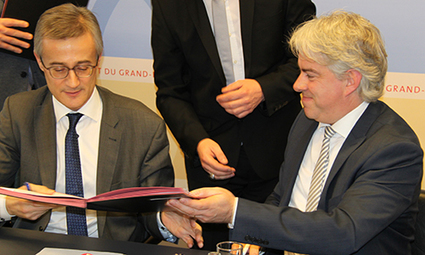



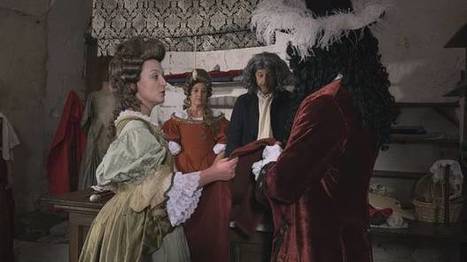

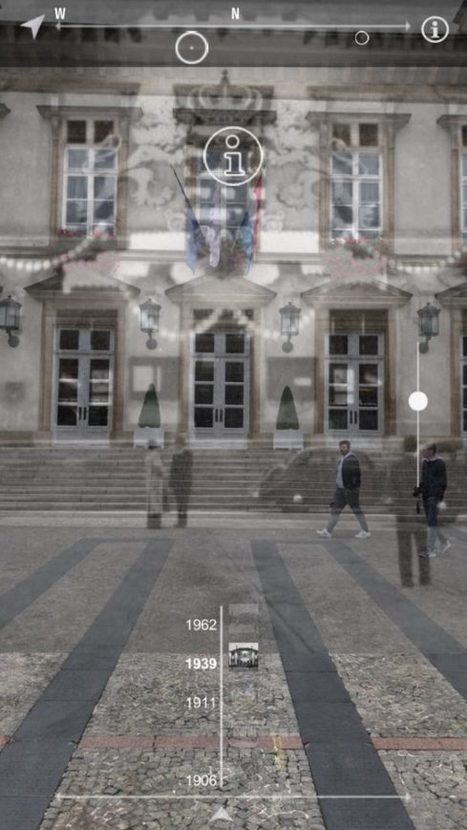

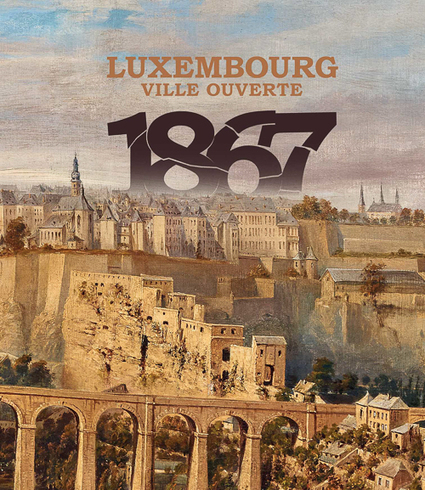


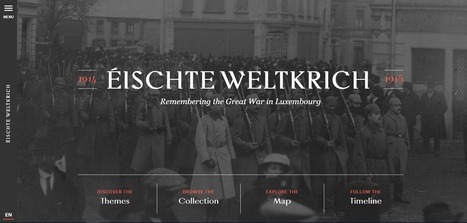

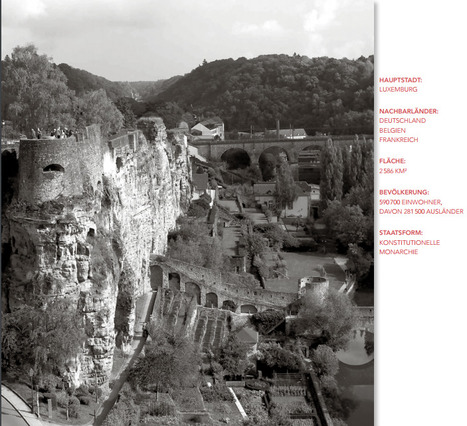
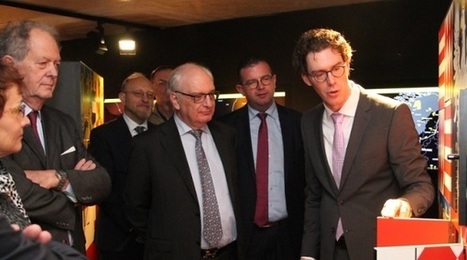
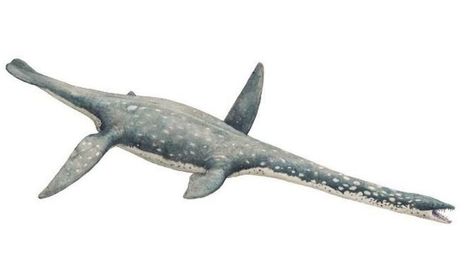

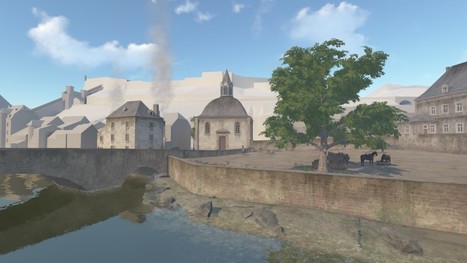

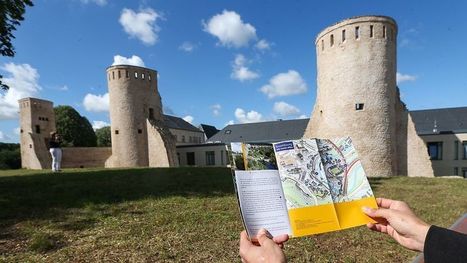
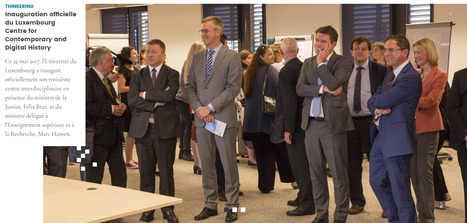





Luxembourg's Ministry of State and the Ministry of Education, Children and Youth have announced that a Holocaust education centre will open its doors at the Abbey of Cinqfontaines next year.
During a ceremony held at the abbey on Sunday in memory of the nearly 300 Jews who were interned there before their deportation, Luxembourg's Minister of Education, Children and Youth, Claude Meisch, announced the opening of a centre for citizenship education and remembrance of the victims of the Shoah (also known as the Holocaust) in 2022.
During the Second World War, the former Abbey of Cinqfontaines was requisitioned and used in Luxembourg as a place of internment for Jews. Internment in appalling living conditions preceded deportation to Nazi concentration and extermination camps such as Theresienstadt and Auschwitz.
Learn more / En savoir plus / Mehr erfahren:
http://www.scoop.it/t/luxembourg-europe/?&tag=History